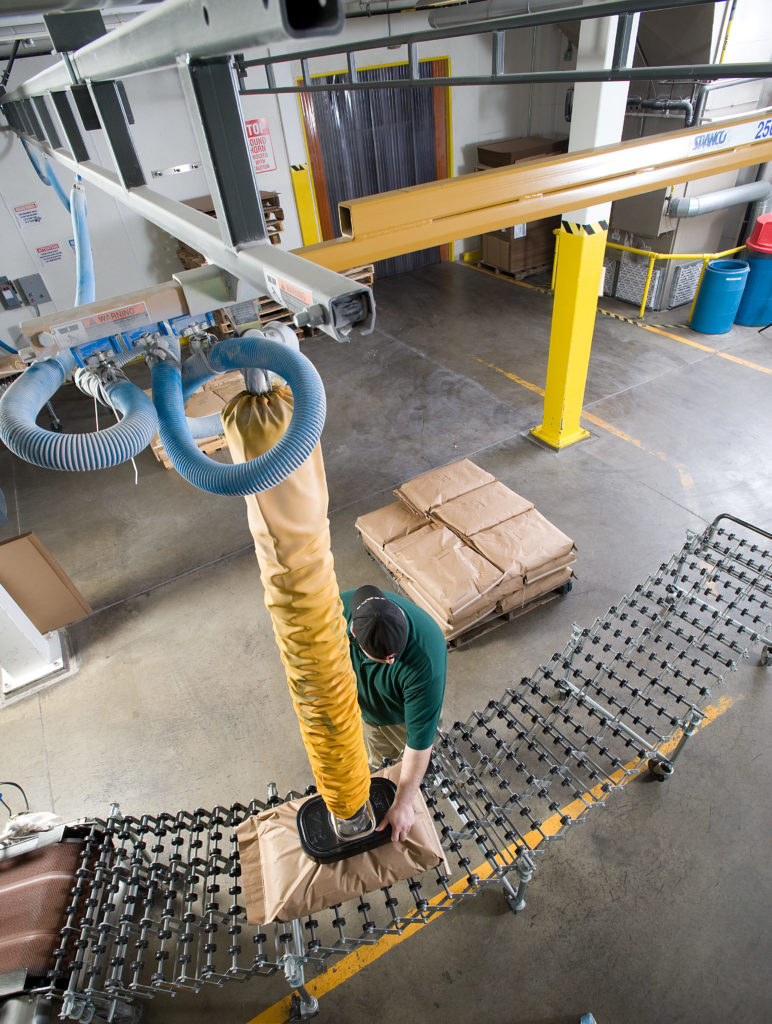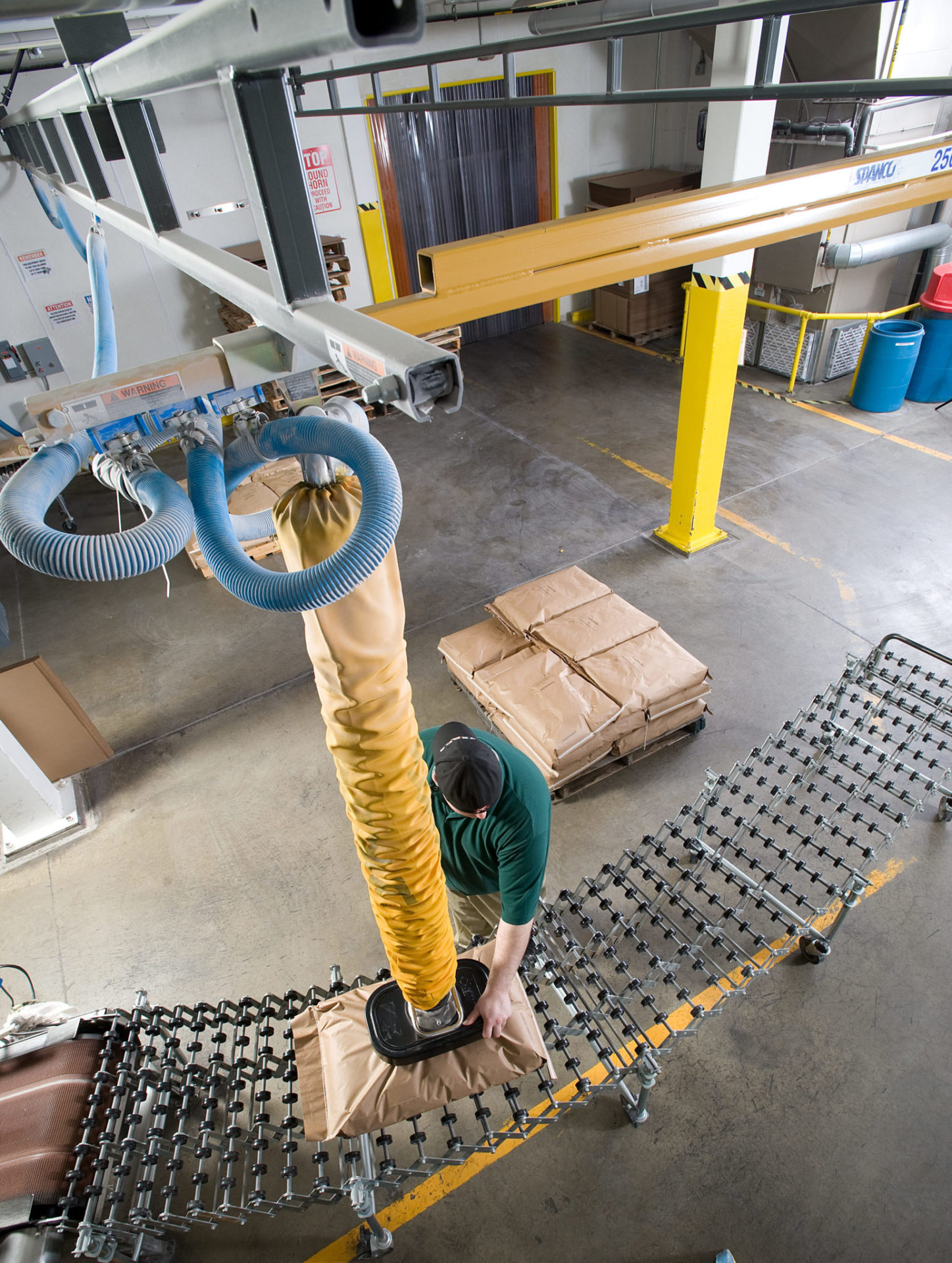
How to Know When It’s Time for a Crane
Sep 9, 2019
Every year, many workers suffer avoidable injuries because of seemingly negligible strain. We don’t often think of simple, repetitive work as being especially hazardous, but it can be more dangerous than we realize. Repetitive Strain Injuries, or RSIs, can be caused by any task that requires a worker to perform the same motion many times, and they cost US businesses billions of dollars every year.
According to the Liberty Mutual Workplace Safety Index for 2018, overexertion is the highest single cause of disabling workplace injuries at 23.4 percent. Many RSIs are caused by overexertion, especially when the repeated motion is lifting, pushing, pulling, carrying, or throwing heavy objects.
These types of repetitive tasks can lead to many different types of injuries, such as carpal tunnel syndrome, rotator cuff injuries, tendonitis, sprains, strains, tears, and more. Jobs that require frequent, repetitive lifting, even of relatively light loads, can also cause dislocations and back and leg injuries on top of other RSIs.
How Much is Too Much?
The National Institute of Occupational Safety and Health (NIOSH) uses a formula that determines the maximum safe weight for workers to lift over a substantial period of time, known as the Recommended Weight Limit, or RWL. Under ideal conditions, the maximum weight NIOSH recommends lifting repeatedly is 51 pounds. However, this ideal number is affected by six different variables that reduce the maximum safe weight for individual applications.
Any factor that reduces a worker’s leverage or access to the object he or she is lifting reduces the maximum safe weight for repetitive lifting. These factors include horizontal location, vertical location, vertical travel distance, asymmetric angle, frequency and duration of lifting, and coupling, or grip.
When these factors are analyzed and calculated into the NIOSH formula, using 51 pounds as the maximum RWL, the actual RWL for a specific application is reduced. As each factor becomes more severe, the weight a worker can lift safely becomes smaller, and the risk of an RSI becomes greater.
Preventing Repetitive Stress Injuries
If the task a worker is performing requires repetitive lifting or carrying, there are several ways to reduce the risk of RSIs. Some of the best ways to improve RWL factors are to reduce the distance loads are lifted and to avoid lifting or lowering loads to or from the floor. These changes reduce the impact lifting actions have on workers, which allows them to perform the lift more safely.
Providing easy access to objects that have to be lifted can also improve RWL factors. Reducing the horizontal distance between the worker and the object reduces the distance that worker has to stretch or bend to lift the object. Easy access can also allow workers to reach objects without twisting. If these factors can’t be reduced, the only way to make the lifting safer is to reduce load weight or to reduce lift frequency. However, improving these RWL factors is not always possible.
Material Handling Solutions
If you have a repetitive lift where the lifted weight is greater than 51 pounds, or where the lifting factors reduce the RWL to less than the weight of the load you need to lift, manual lifting will almost certainly lead to a Repetitive Stress Injury. If you can’t reduce those RWL factors, there is an option that can greatly reduce the risk of RSIs.
Many manufacturing facilities have replaced their manual lifting processes with mechanical systems. Jib cranes and overhead workstation bridge cranes have become popular solutions to reduce strain and injuries for workers who perform repetitive lifting tasks.
Replacing manual lifting processes with material handling systems can have far-reaching benefits for manufacturing companies. Machines don’t get fatigued or injured the way workers performing manual labor do, and installing cranes can improve production efficiency, product and service quality, and worker morale. Improved efficiency can also reduce production bottlenecks, which can improve workflow and reduce production costs.
Material handling systems also protect workers from RSIs. By replacing manual lifting processes with cranes, companies can improve worker safety and health, leading to decreased downtimes, less lost productivity, fewer workplace injuries, and reduced workers compensation costs.
Spanco offers a range of Jib Cranes, Gantry Cranes, and Overhead Workstation Bridge Cranes with capacities from 150 pounds. If your manufacturing application requires frequent, repetitive lifting, a Spanco Material Handling System may be able to improve many aspects of your business. Contact your local Spanco representative to see how we can help you find the best solution for your material handling needs.
Categories
Share this post
Contact us
Looking for the perfect fall protection equipment? Let us help!
